By now, you’ve no doubt heard at least some discourse about the pros and cons of generative artificial intelligence (AI), such as ChatGPT. AI tech is advancing at a rapid pace, shaping the future for nearly every industry. Recently, it’s proved to be a powerful force in creative fields ranging from writing to music, film, animation, and graphic design.
As a creative marketing and advertising agency, Ohlmann Group has been following AI developments closely. The way we see it, generative AI is still not a substitute for human creativity. Rather, it’s a tool creative pros can use to save time and focus on what they do best: create!
For an inside perspective on artificial intelligence “art,” we asked some of our graphic designers to share their thoughts on AI design — the good, the bad, and the ugly.
The Good: Yes, AI Has Some Benefits for Designers
AI may be wildly popular right now, but it’s not a new concept. We bet you’ve been using artificial intelligence tools (like spell check or Siri) for a while now!
Some of the AI-driven tools our creative team likes to use include:
- Photoshop Content-Aware Fill — This feature in Photoshop helps our designers retouch images quickly and seamlessly.
- Lightroom Auto Select – By automatically selecting the photo subject or background, this feature removes time-consuming and tedious manual tasks so our designers can focus on creativity.
- Grammarly — Designers need to communicate through the written word, too. An extra check for grammar, spelling, clarity, and flow is always a good thing!
- ChatGPT — Rather than generating entire pieces of content, we use ChatGPT for time-saving tasks like outlining, organizing, and summarizing. For example, meeting notes can be transcribed and transformed into a concise creative brief in seconds, helping to reduce the lead time for creative projects.
“I think some form of AI will become a part of the design process, much like the Adobe programs we use every day,” said Meghen Murphy, Graphic Designer at Ohlmann Group. “My biggest concern is the ethics around sourcing the content and reference images AI programs pull from. It’s a spectrum of features from a small assist to full-blown image generating.”
The Bad: AI Design Is Far from Perfect
Generative AI is a work in progress, literally. The programs we use now are constantly learning (from humans) to become “smarter” and more capable.
If you’ve experimented with image-generating AI, you know that it’s somewhat entertaining but not quite accurate. Look closely, and you’ll see that many AI image generators struggle to render realistic-looking images, particularly those with hands, feet, or teeth.
While AI image-generating can be helpful for things like concepting, it seriously falls short when compared to the day-to-day work of professional graphic designers.
The Ugly: Opposite of Originality
Today’s AI image generators don’t produce art out of thin air. They are trained to produce images using references scraped from the internet. One could argue that AI doesn’t “create”; it simply mashes up existing art based on algorithms and data. This is problematic on several levels.
Meghen pointed out Midjourney as one example of the copyright nightmares posed by generative AI design. Accessible through Discord, Midjourney can generate entire images from text prompts. The problem is that Midjourney is trained on billions of unlicensed copyrighted images — without consent from the original artists (or compensation, for that matter). As a result, several artists have filed a class action lawsuit against Midjourney and a few other AI art generators for mass copyright infringement.
Due to the many ethical and potential legal issues surrounding AI-generated art, it’s wise to think twice before using AI for commercial design purposes.
Bottom Line: Good Design Needs the Human Touch
We’ll always be on the side of real artists and human-powered creativity. At the same time, we acknowledge the potential of AI-powered tools to help our teams enhance their skills, improve efficiency, and deliver more value to our clients as a result.
In its purest form, marketing is about reaching and connecting with people — and that’s best accomplished through creativity, empathy, and shared understanding. You can count on us to continue crafting meaningful marketing for humans, by humans.
Do you have questions about AI and your marketing? We’d love to keep the conversation going. Fill out our contact form to get in touch with our team today!

